 W
WAn aerial lift (U.S.), also known as a cable car, is a means of cable transport in which cabins, cars, gondolas, or open chairs are hauled above the ground by means of one or more cables. Aerial lift systems are frequently employed in a mountainous territory where roads are relatively difficult to build and use, and have seen extensive use in mining. Aerial lift systems are relatively easy to move and have been used to cross rivers and ravines. In more recent times, the cost-effectiveness and flexibility of aerial lifts have seen an increase of gondola lift being integrated into urban public transport systems.
 W
WAn aerial tramway, sky tram, cable car, ropeway or aerial tram is a type of aerial lift which uses one or two stationary ropes for support while a third moving rope provides propulsion. With this form of lift, the grip of an aerial tramway cabin is fixed onto the propulsion rope and cannot be decoupled from it during operations.
 W
WAn aerial work platform (AWP), also known as an aerial device, elevating work platform (EWP), cherry picker, bucket truck or mobile elevating work platform (MEWP) is a mechanical device used to provide temporary access for people or equipment to inaccessible areas, usually at height. There are distinct types of mechanized access platforms and the individual types may also be known as a "cherry picker" or "scissor lift."
 W
WThe Aiguille du Midi is a 3,842-metre-tall (12,605 ft) mountain in the Mont Blanc massif within the French Alps. It is a popular tourist destination and can be directly accessed by cable car from Chamonix that takes visitors close to Mont Blanc.
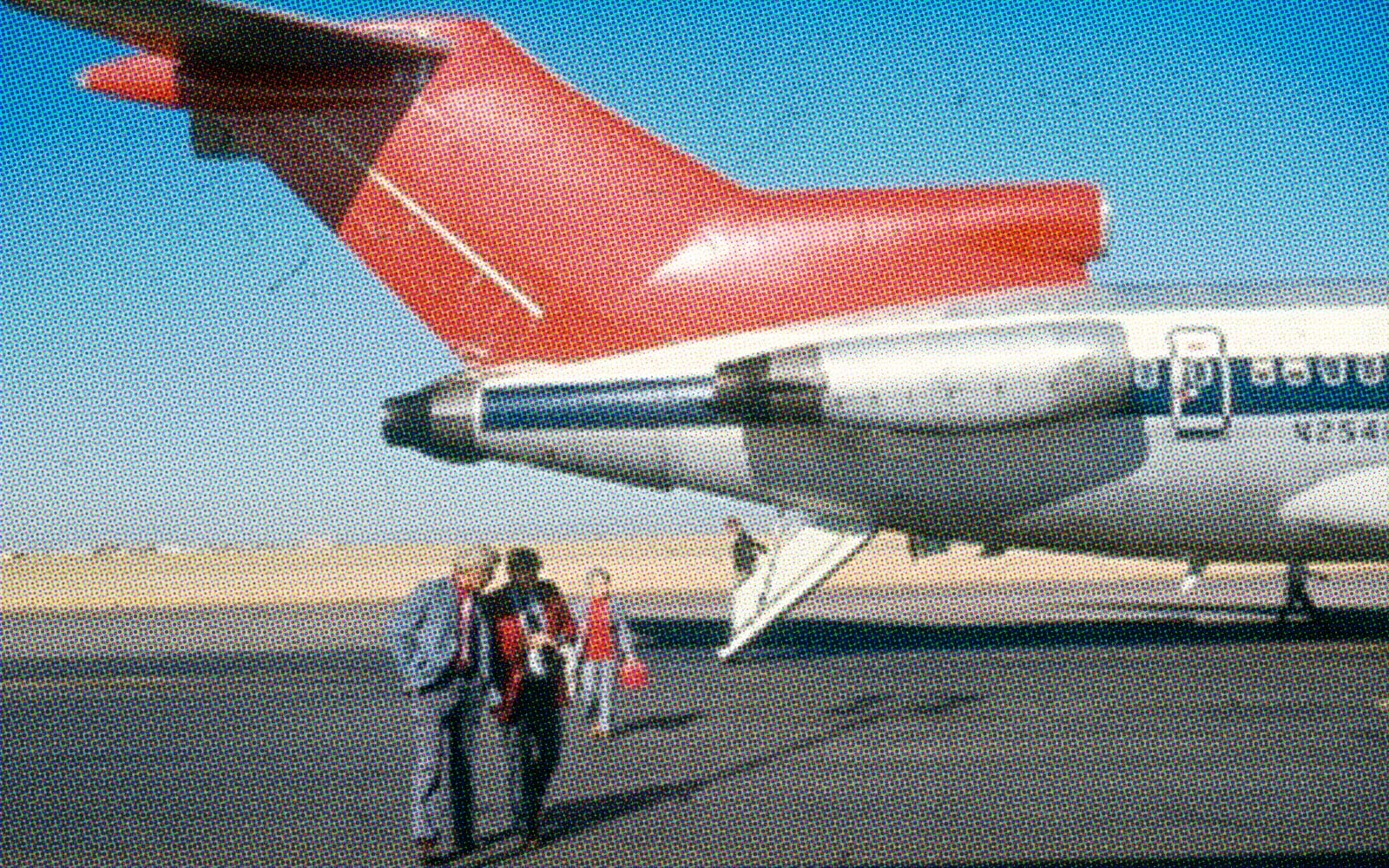 W
WAn airstair is a set of steps built into an aircraft so that passengers may board and alight the aircraft. The stairs are often built into a clamshell-style door on the aircraft. Airstairs eliminate the need for passengers to use a mobile stairway or jetway to board or exit the aircraft, providing more independence from ground services. Some of the earliest aircraft to feature airstairs were the Martin 2-0-2 and Martin 4-0-4. Some models of the Douglas DC-3 were also retrofitted with airstairs. As airport infrastructure has developed, the need for airstairs has decreased, as jetways or mobile stairways are often available.
 W
WThe Asmara-Massawa Cableway was a cableway built in Italian Eritrea before World War II.The Eritrean Ropeway, completed in 1937, ran 71.8 km from the south end of Asmara to the city-port of Massawa..
 W
WA boat lift, ship lift, or lift lock is a machine for transporting boats between water at two different elevations, and is an alternative to the canal lock.
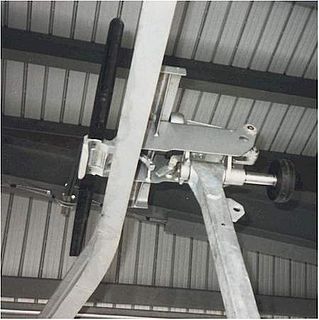 W
WA cable grip is a device for propelling a vehicle by attaching to a wire cable running at a (relatively) constant speed. The vehicle may be suspended from the cable, as in the case of aerial lifts such as a gondola lift (télécabine), may be guided by rails, as in a cable traction railway, or may be self-guiding, as in a button lift. Typically, multiple vehicles will use the same cable; where just one or two vehicles are in use they will tend to be attached to the cable permanently.
 W
WAn inclined plane is a type of cable railway used on some canals for raising boats between different water levels. Boats may be conveyed afloat, in caissons, or may be carried in cradles or slings.
 W
WThe Central–Mid-Levels escalator and walkway system in Hong Kong is the longest outdoor covered escalator system in the world. The system covers over 800 m (2,600 ft) in distance and traverses an elevation of over 135 m (443 ft) from bottom to top. It opened in 1993 to provide an improved link between the Central and Mid-Levels districts on Hong Kong Island.
 W
WAn elevated passenger ropeway, or chairlift, is a type of aerial lift, which consists of a continuously circulating steel wire rope loop strung between two end terminals and usually over intermediate towers, carrying a series of chairs. They are the primary onhill transport at most ski areas, but are also found at amusement parks, various tourist attractions, and increasingly in urban transport.
 W
WA crane is a type of machine, generally equipped with a hoist rope, wire ropes or chains, and sheaves, that can be used both to lift and lower materials and to move them horizontally. It is mainly used for lifting heavy things and transporting them to other places. The device uses one or more simple machines to create mechanical advantage and thus move loads beyond the normal capability of a human. Cranes are commonly employed in the transport industry for the loading and unloading of freight, in the construction industry for the movement of materials, and in the manufacturing industry for the assembling of heavy equipment.
 W
WA davit is any of various crane-like devices used on a ship for supporting, raising, and lowering equipment such as boats and anchors.
 W
WA detachable chairlift or high-speed chairlift is a type of passenger aerial lift, which, like a fixed-grip chairlift, consists of numerous chairs attached to a constantly moving wire rope that is strung between two terminals over intermediate towers. They are now commonplace at all but the smallest of ski resorts. Some are installed at tourist attractions as well as for urban transportation.
 W
WAn elevator or lift is a type of cable-assisted, hydraulic cylinder-assisted, or roller-track assisted machine that vertically transports people or freight between floors, levels, or decks of a building, vessel, or other structure. They are typically powered by electric motors that drive traction cables and counterweight systems such as a hoist, although some pump hydraulic fluid to raise a cylindrical piston like a jack.
 W
WAn escalator is a moving staircase which carries people between floors of a building or structure. It consists of a motor-driven chain of individually linked steps on a track which cycle on a pair of tracks which keep them horizontal.
 W
WFujitec Co., Ltd. is founded by late Honorary Chairman, Mr. Shotaro Uchiyama in February 1948 for the purpose of research and development, manufacturing, sales, installation and maintenance of elevators, escalators and travellators.
 W
WA funicular is a form of cable railway which connects points along a railway laid on a steep slope. Two counterbalanced cars are permanently attached to opposite ends of the haulage cable, which is looped over a pulley at the upper end of a track. The two cars move in concert: as one ascends, the other descends. This arrangement distinguishes funiculars from inclined elevators which have a single car that is hauled uphill. They are also different from counterbalanced inclines which operate on a similar principle hauling vehicles that are not permanently attached to the cable.
 W
WA gondola lift is a means of cable transport and type of aerial lift which is supported and propelled by cables from above. It consists of a loop of steel wire rope that is strung between two stations, sometimes over intermediate supporting towers. The cable is driven by a bullwheel in a terminal, which is typically connected to an engine or electric motor. It is often considered a continuous system since it features a haul rope which continuously moves and circulates around two terminal stations. In contrast, an aerial tramway operates solely with fixed grips and simply shuttles back and forth between two end terminals.
 W
WPointe Helbronner is a mountain in the Mont Blanc massif in the Graian Alps on the watershed between France and Italy.
 W
WIn underground mining a hoist or winder is used to raise and lower conveyances within the mine shaft. Modern hoists are normally powered using electric motors, historically with direct current drives utilizing Ward Leonard control machines and later solid-state converters (thyristors), however modern large hoists use alternating current drives that are variable frequency controlled. There are three principal types of hoists used in mining applications:
 W
WThe Huangguan Escalator is an escalator in Chongqing, China.
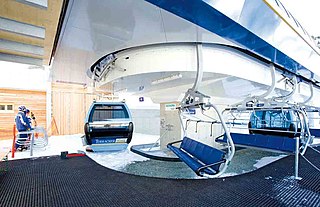 W
WA hybrid lift is a type of ski lift that combines the elements of a chairlift and a gondola lift. First introduced by Poma, who refers to them as Telemix, they have since been built by most lift manufacturers who refer to them by a variety of names; Doppelmayr refers to them as a combined lift, Bartholet refers to them with the French name, téléporté mixte, while the more generic terms chondola and telecombi are common in North America.
 W
WThe term Jacob's ladder, used on a ship, applies to two kinds of rope ladders.
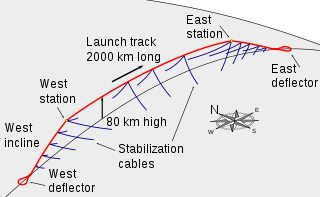 W
WA launch loop, or Lofstrom loop, is a proposed system for launching objects into orbit using a moving cable-like system situated inside a sheath attached to the Earth at two ends and suspended above the atmosphere in the middle. The design concept was published by Keith Lofstrom and describes an active structure maglev cable transport system that would be around 2,000 km (1,240 mi) long and maintained at an altitude of up to 80 km (50 mi). A launch loop would be held up at this altitude by the momentum of a belt that circulates around the structure. This circulation, in effect, transfers the weight of the structure onto a pair of magnetic bearings, one at each end, which support it.
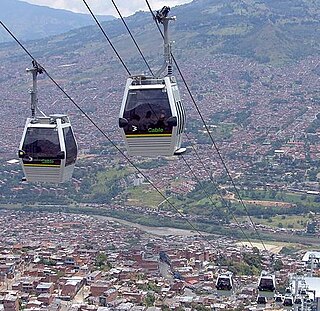 W
WMetrocable is a gondola lift system implemented by the City Council of Medellín, Colombia, with the purpose of providing a transportation service that compliments the Medellín Metro. It was designed to reach some of the city's informal settlements on the steep hills that mark its topography. It is largely considered to be the first urban cable propelled transit system in South America. The transportation infrastructure is already established and has been in service since 2004, although there are currently no official links between the gondolas themselves and the Metro line.
 W
WAn orbital ring is a concept of an artificial ring placed around a body and set rotating at such a rate that the apparent centrifugal force is large enough to counteract the force of gravity. For the Earth, the required speed is on the order of 10 km/sec, compared to a typical low earth orbit velocity of 8 km/sec. The structure is intended to be used as a space station or as a planetary vehicle for very high-speed transportation or space launch.
 W
WA paternoster or paternoster lift is a passenger elevator which consists of a chain of open compartments that move slowly in a loop up and down inside a building without stopping. Passengers can step on or off at any floor they like. The same technique is also used for filing cabinets to store large amounts of (paper) documents or for small spare parts. The much smaller belt manlift which consists of an endless belt with steps and rungs but no compartments is also sometimes called a paternoster.
 W
WA pilot ladder is a highly specialized form of rope ladder, typically used on board cargo vessels for the purposes of embarking and disembarking pilots. The design and construction of the ladders is tightly specified by international regulation under the SOLAS regime.
 W
WA rack railway is a steep grade railway with a toothed rack rail, usually between the running rails. The trains are fitted with one or more cog wheels or pinions that mesh with this rack rail. This allows the trains to operate on steep grades above 10%, which is the maximum for friction-based rail. Most rack railways are mountain railways, although a few are transit railways or tramways built to overcome a steep gradient in an urban environment.
 W
WShear legs, also known as sheers, shears, or sheer legs, are a form of two-legged lifting device. Shear legs may be permanent, formed of a solid A-frame and supports, as commonly seen on land and the floating sheerleg, or temporary, as aboard a vessel lacking a fixed crane or derrick.
 W
WA shopping cart conveyor is a device used in multi-level retail stores for moving shopping carts parallel and adjacent to an escalator. Shoppers can load their shopping carts onto the conveyor, step onto the escalator, ride the escalator with the cart beside them and collect the cart with the contained merchandise at the next level.
 W
WA ski lift is a mechanism for transporting skiers up a hill. Ski lifts are typically a paid service at ski resorts. The first ski lift was built in 1908 by German Robert Winterhalder in Schollach/Eisenbach, Hochschwarzwald.
 W
WA skyhook is a proposed momentum exchange tether that aims to reduce the cost of placing payloads into low Earth orbit. A heavy orbiting station is connected to a cable which extends down towards the upper atmosphere. Payloads, which are much lighter than the station, are hooked to the end of the cable as it passes, and are then flung into orbit by rotation of the cable around the center of mass. The station can then be reboosted to its original altitude by electromagnetic propulsion, rocket propulsion, or by deorbiting another object with the same kinetic energy as transferred to the payload.
 W
WA slope car is a small automated monorail, or a fusion between monorail, people mover, and rack railway. It is a brand name of Kaho Manufacturing. Since this mode of transportation is relatively unknown, it lacks widely accepted generic name, other than the simple "monorail". The system, however, is different from normal modern monorails in many ways. It is a development from industrial monorails used in 1960s orchards. Slope cars are installed in more than 80 places in Japan and South Korea.
 W
WA space elevator is a proposed type of planet-to-space transportation system. The main component would be a cable anchored to the surface and extending into space. The design would permit vehicles to travel along the cable from a planetary surface, such as the Earth's, directly into orbit, without the use of large rockets. An Earth-based space elevator would consist of a cable with one end attached to the surface near the equator and the other end in space beyond geostationary orbit. The competing forces of gravity, which is stronger at the lower end, and the outward/upward centrifugal force, which is stronger at the upper end, would result in the cable being held up, under tension, and stationary over a single position on Earth. With the tether deployed, climbers could repeatedly climb the tether to space by mechanical means, releasing their cargo to orbit. Climbers could also descend the tether to return cargo to the surface from orbit.
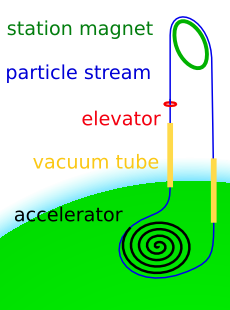 W
WA space fountain is a proposed form of an extremely tall tower extending into space. As known materials cannot support a static tower with this height, a space fountain has to be an active structure: A stream of pellets is accelerated upwards from a ground station. At the top it is deflected downwards. The necessary force for this deflection supports the station at the top and payloads going up the structure. A spacecraft could launch from the top without having to deal with the atmosphere. This could reduce the cost of placing payloads into orbit. As downside the tower will collapse if the containment systems fail and the stream is broken. This risk could be reduced by several redundant streams.
 W
WA space gun, sometimes called a Verne gun because of its appearance in From the Earth to the Moon by Jules Verne, is a method of launching an object into space using a large gun- or cannon-like structure. Space guns could thus potentially provide a method of non-rocket spacelaunch. It has been conjectured that space guns could place satellites into Earth's orbit, and could also launch spacecraft beyond Earth's gravitational pull and into other parts of the Solar System by exceeding Earth's escape velocity of about 11.20 km/s. However, these speeds are too far into the hypersonic range for most practical propulsion systems and also would cause most objects to burn up due to aerodynamic heating or be torn apart by aerodynamic drag. Therefore, a more likely future use of space guns would be to launch objects into Low Earth orbit, from where attached rockets could be fired or the objects could be "collected" by maneuverable orbiting satellites.
 W
WSpace tethers are long cables which can be used for propulsion, momentum exchange, stabilization and attitude control, or maintaining the relative positions of the components of a large dispersed satellite/spacecraft sensor system. Depending on the mission objectives and altitude, spaceflight using this form of spacecraft propulsion is theorized to be significantly less expensive than spaceflight using rocket engines.
 W
WA stair lift is a mechanical device for lifting people, typically those with disabilities, up and down stairs. For sufficiently wide stairs, a rail is mounted to the treads of the stairs. A chair or lifting platform is attached to the rail. A person gets onto the chair or platform and is lifted up or down the stairs by the chair which moves along the rail.
 W
WStairs, a stairway, a staircase, a stairwell, or a flight of stairs is a construction designed to bridge a large vertical distance by dividing it into smaller vertical distances, called steps. Stairs may be straight, round, or may consist of two or more straight pieces connected at angles.
 W
WStarTram is a proposed space launch system propelled by maglev. The initial Generation 1 facility would launch cargo only, launching from a mountain peak at an altitude of 3 to 7 kilometres with an evacuated tube staying at local surface level; it has been claimed that about 150,000 tons could be lifted to orbit annually. More advanced technology would be required for the Generation 2 system for passengers, with a longer track instead gradually curving up at its end to the thinner air at 22 kilometres (72,000 ft) altitude, supported by magnetic levitation, reducing g-forces when each capsule transitions from the vacuum tube to the atmosphere. A SPESIF 2010 presentation stated that Generation 1 could be completed by the year 2020 or later if funding began in 2010, and Generation 2 by 2030 or later.
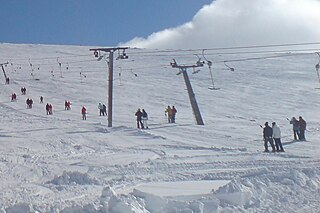 W
WA surface lift is a means of cable transport for snow sports in which skiers and snowboarders remain on the ground as they are pulled uphill. While they were once prevalent, they have been overtaken in popularity by higher-capacity and higher-comfort aerial lifts, such as chairlifts and gondola lifts. Today, surface lifts are most often found on beginner slopes, small ski areas, and peripheral slopes. They are also often utilized to access glacier ski slopes because their supports can be anchored in glacier ice due to the lower forces and realigned due to glacier movement.
 W
WThe Teleférico de Caracas is a gondola lift that ascends El Ávila Mountain within El Ávila National Park, in Caracas, Venezuela.
 W
WTop Station is a tourist destination located in Theni district of Tamil Nadu. Even though located in Tamil Nadu, the only road connecting it to the outside world is through Kerala. Top Station is notable as the historic transshipment location for Kannan Devan tea delivered there from Munnar and Madupatty by railway and then down by ropeway to Kottagudi. This area is popular for the rare Neelakurinji flowers. The Kurinjimala Sanctuary is nearby. Top Station is the western entrance to the planned Palani Hills National Park.
 W
WTransMiCable is a gondola lift system implemented by the city of Bogotá, Colombia, with the purpose of providing a complementary transportation service to TransMilenio. Line T, with a length of 3,34 km and four stations, connects the Portal del Tunal (TransMilenio) station to Mirador del Paraíso station in the steep hills of Ciudad Bolívar district and was opened on 27 December 2018.
 W
WThe Vanoise Express is a double-decker cable car that links La Plagne with Les Arcs ski resorts in the Alps, acting as a vital link in the Paradiski area.
 W
WVermaport is a registered trademark brand of a shopping cart conveyor system built by Vermaport Limited of Nottingham, England. The Vermaport SC system is designed to transport shopping carts between floors of a retail establishment, the Vermaport LC system is a Luggage Cart System for Airports to help travellers navigate multi-levels at Airports and works in a similar way to the Vermaport SC. The Vermaport RS is a Luggage Return System to transport or store luggage carts at airports or other transportation hubs. The Vermaport systems are safer alternatives to inclined moving walkways, where a Vermaport system will take up about half as much space as a moving walkway.